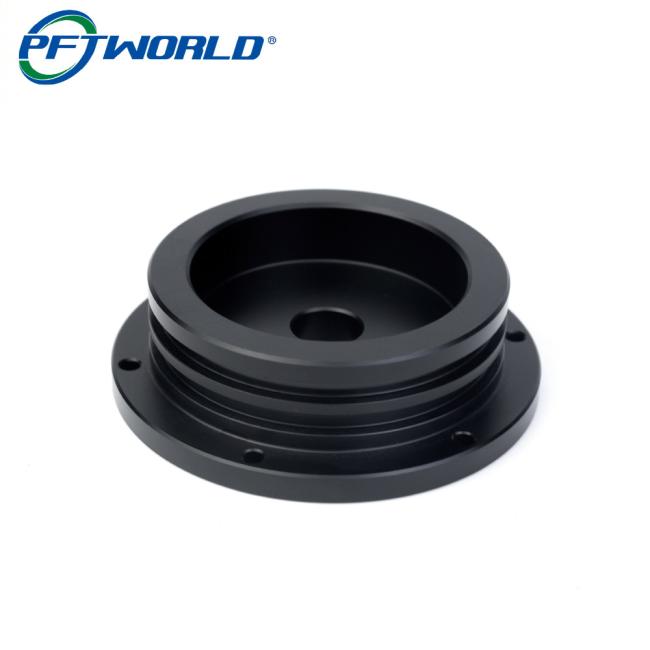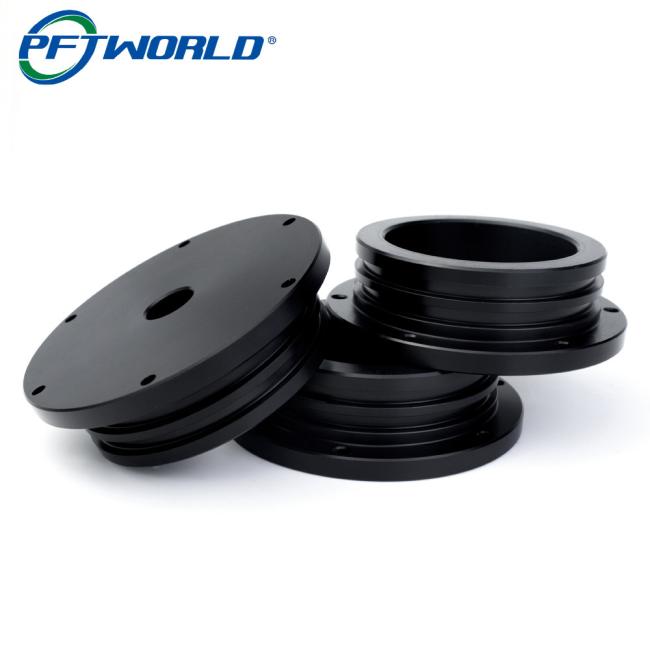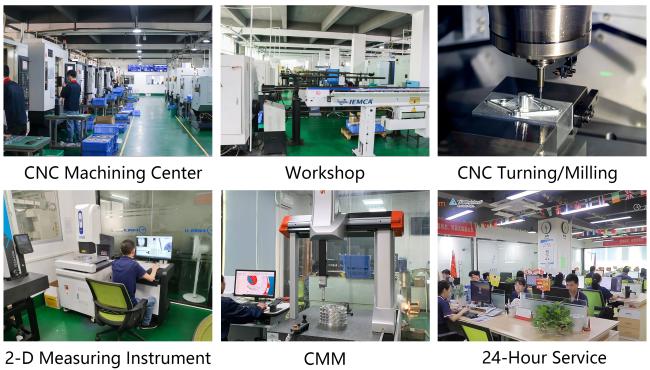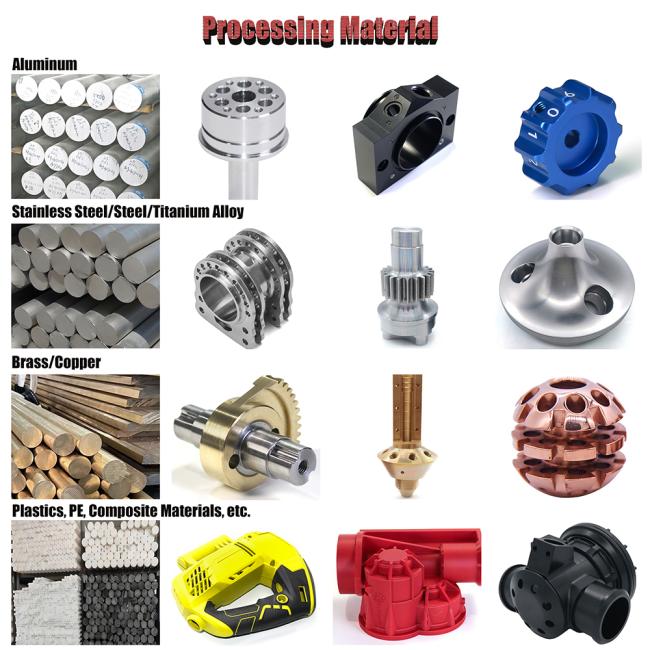In
the
ever-evolving
world
of
manufacturing,
plastic
materials
have
become
indispensable
due
to
their
lightweight,
versatile,
and
cost-effective
nature.
Among
the
various
engineering
plastics,
POM
(Polyoxymethylene),
commonly
known
as
Acetal,
stands
out
for
its
exceptional
strength,
rigidity,
and
excellent
wear
resistance.
When
combined
with
CNC
machining,
POM
parts
are
created
with
precision
and
accuracy,
making
them
ideal
for
demanding
applications
across
various
industries.
Whether
you
need
custom
gears,
bearings,
or
intricate
components,
CNC
machining
of
POM
parts
offers
an
unbeatable
combination
of
quality,
performance,
and
efficiency.


CNC
Machining
of
POM
Parts:
The
Process
CNC
machining
is
a
manufacturing
process
where
a
computer-controlled
machine
is
used
to
precisely
cut,
mill,
or
drill
a
workpiece
into
a
specified
shape.
When
applied
to
POM,
CNC
machines
are
able
to
produce
complex
and
intricate
parts
with
minimal
error,
making
it
the
ideal
method
for
creating
high-quality,
custom
plastic
components.
The
CNC
machining
process
typically
involves
the
following
steps:
-
Design
and
CAD
Modeling:
The
process
begins
with
creating
a
3D
CAD
model
of
the
part,
where
the
design
is
fully
specified
down
to
the
finest
details,
including
dimensions,
material
selection,
and
tolerance
levels.
-
Material
Selection:
POM
is
selected
based
on
its
superior
mechanical
properties,
making
it
the
best
choice
for
producing
durable
and
high-performance
components.
-
Machining
Setup:
Using
CNC
routers,
lathes,
and
milling
machines,
the
material
is
securely
placed
in
the
machine
tool,
and
the
computer
program
guides
the
machinery
to
perform
tasks
such
as
cutting,
drilling,
milling,
and
turning.
-
Post-Processing:
After
the
primary
machining
steps
are
completed,
the
part
may
undergo
additional
processes
such
as
polishing,
sanding,
or
surface
treatment
to
achieve
the
desired
finish
and
further
enhance
the
material
properties.
-
Inspection
and
Quality
Control:
Each
part
is
rigorously
tested
and
inspected
to
ensure
it
meets
the
exact
specifications
and
quality
standards,
with
tolerances
verified
through
precise
measurement
tools.
Why
Choose
CNC
Machined
POM
Parts?
-
Unmatched
Precision:
CNC
machining
ensures
that
each
POM
part
is
manufactured
with
a
high
level
of
precision
and
accuracy,
down
to
the
micron
level.
This
is
essential
for
applications
where
tight
tolerances
are
required
for
proper
fit
and
functionality.
-
Customizability:
CNC
machining
allows
for
the
creation
of
highly
custom
parts,
tailored
to
specific
needs.
Whether
you
need
unique
shapes,
detailed
engravings,
or
complex
geometries,
CNC
machining
can
produce
virtually
any
design
with
the
exact
specifications
you
need.
-
Consistency
and
Repeatability:
Once
the
design
is
programmed
into
the
CNC
machine,
the
process
is
automated,
ensuring
that
each
part
is
consistently
produced
to
the
same
high-quality
standard.
This
repeatability
is
crucial
in
industries
requiring
large
quantities
of
identical
components.
-
Reduced
Waste
and
Efficient
Production:
CNC
machining
minimizes
material
waste
by
using
only
the
required
amount
of
POM
for
each
part,
leading
to
cost
savings
and
improved
sustainability.
Additionally,
the
process
is
highly
efficient,
providing
quick
turnaround
times
for
both
prototypes
and
production
runs.
-
Enhanced
Durability:
Parts
made
from
POM
are
highly
durable,
offering
excellent
wear
resistance,
low
friction,
and
outstanding
mechanical
properties.
This
makes
them
ideal
for
applications
that
require
long-lasting,
high-performance
components.
Applications
of
CNC
Machined
POM
Parts
POM’s
unique
properties
make
it
ideal
for
a
wide
range
of
applications
across
various
industries.
Some
of
the
most
common
applications
include:
-
Automotive:
POM
is
used
to
create
high-performance
components
such
as
gears,
bearings,
bushings,
and
clips,
all
of
which
require
durability
and
wear
resistance
to
withstand
the
demands
of
the
automotive
environment.
-
Aerospace:
In
aerospace,
POM
is
used
for
components
like
structural
elements,
brackets,
and
housings,
where
weight
reduction
and
high-strength
materials
are
critical
for
performance
and
safety.
-
Electronics:
POM
is
often
used
in
electronic
components
like
connectors,
switches,
and
housings,
where
precision
and
dimensional
stability
are
required
for
proper
functionality.
-
Medical
Devices:
CNC-machined
POM
parts
are
widely
used
in
medical
equipment
such
as
surgical
instruments,
diagnostic
devices,
and
drug
delivery
systems,
where
precision,
biocompatibility,
and
durability
are
essential.
-
Industrial
Applications:
From
rollers
and
guides
to
machine
components,
POM’s
low
friction
and
wear
resistance
make
it
ideal
for
a
variety
of
industrial
applications,
especially
in
environments
where
parts
are
subject
to
frequent
movement
or
harsh
conditions.
Conclusion
When
it
comes
to
creating
high-precision
plastic
parts,
CNC
machining
of
POM
offers
unmatched
accuracy,
versatility,
and
performance.
POM’s
outstanding
mechanical
properties,
combined
with
the
capabilities
of
CNC
machining,
make
it
an
ideal
choice
for
industries
such
as
automotive,
aerospace,
medical,
and
industrial
applications.
By
choosing
us
for
your
CNC-machined
POM
parts,
you
can
rest
assured
that
your
components
will
meet
the
highest
standards
of
quality
and
reliability,
ensuring
that
your
products
perform
at
their
best
for
years
to
come.
|
|
CNC
Turning,
CNC
Milling,
Laser
Cutting,
Bending,
Spining,
Wire
Cutting,
Stamping,
Electric
Discharge
Machining
(EDM),
Injection
Molding,3D
Printing,Rapid
Prototype,Moulds
etc.
|
|
|
Aluminum:
2000
series,
6000
series,
7075,
5052,
etc.
|
|
Stainlesss
steel:
SUS303,
SUS304,
SS316,
SS316L,
17-4PH,
etc.
|
|
Steel:
1214L/1215/1045/4140/SCM440/40CrMo,
etc.
|
|
Brass:
260,
C360,
H59,
H60,
H62,
H63,
H65,
H68,
H70,
Bronze,
Copper
|
|
Titanium:
Grade
F1-F5
|
|
Plastic:
Acetal/POM/PA/Nylon/PC/PMMA/PVC/PU/Acrylic/ABS/PTFE/PEEK
etc.
|
|
|
Anodized,
Bead
Blasted,
Silk
Screen,
PVD
Plating,
Zinc/Nickl/Chrome/Titanium
Plating,
Brushing,
Painting,
Powder
Coated,
Passivation,
Electrophoresis,
Electro
Polishing,
Knurl,
Laser/Etch/Engrave
etc.
|
|
|
±0.002
~
±0.005mm
|
|
|
Min
Ra
0.1~3.2
|
|
CERTIFICATE
|
ISO9001:2015,AS9100D,ISO13485:2016,ISO45001:2018,IATF16949:2016,ISO14001:2015,ROSH,CE
etc.
|





FAQ
1.
Are
you
a
manufacturer
or
a
trading
company?
We
are
a
factory
located
in
Shenzhen,
China,
with
20
years
of
rich
experience,
covering
6000
square
meters.
Complete
facilities,
including
3D
quality
inspection
equipment,
ERP
system
and
40
machines.
If
necessary,
we
can
provide
you
with
material
certificates,
sample
quality
inspection
and
other
reports.
2.
How
to
get
a
quote?
Detailed
drawings
(PDF/STEP/IGS/DWG...),
including
quality,
delivery
date,
materials,
quality,
quantity,
surface
treatment
and
other
information.
3.
Can
I
get
a
quotation
without
drawings?
Can
your
engineering
team
draw
for
my
creativity?
Of
course,
we
are
also
glad
to
receive
your
samples,
pictures
or
detailed
size
drafts
for
accurate
quotation.
4.
Can
you
provide
samples
before
mass
production?
Of
course,
the
sample
fee
is
necessary.
If
possible,
it
will
be
returned
during
mass
production.
5.
What
is
the
delivery
date?
Generally,
the
sample
lasts
for
1-2
weeks
and
the
batch
production
lasts
for
3-4
weeks.
6.
How
do
you
control
quality?
(1)
Material
Inspection
-
Check
material
surfaces
and
approximate
dimensions.
(2)
First
inspection
of
production
-
ensure
critical
dimensions
in
mass
production.
(3)
Sampling
inspection
-
check
the
quality
before
delivery
to
the
warehouse.
(4)
Preshipment
inspection
-
100%
inspection
by
QC
assistant
before
shipment.
7.
After
sales
service
team
If
you
have
any
problems
after
receiving
the
product,
you
can
provide
feedback
through
voice
call,
video
conference,
email,
etc.
within
one
month.
Our
team
will
provide
you
with
solutions
within
a
week.






